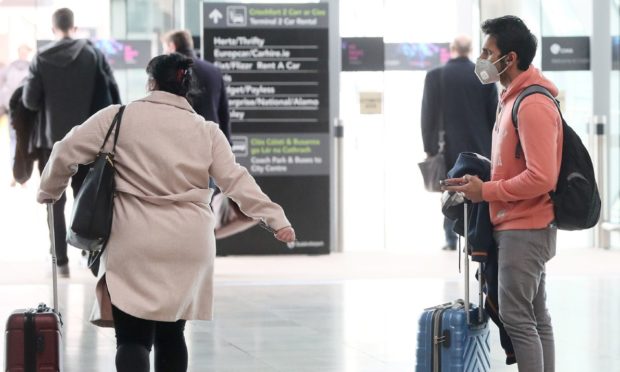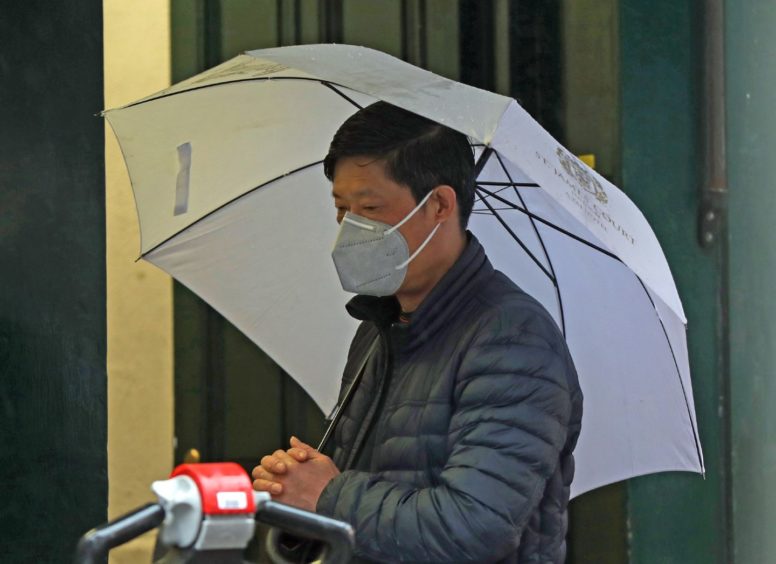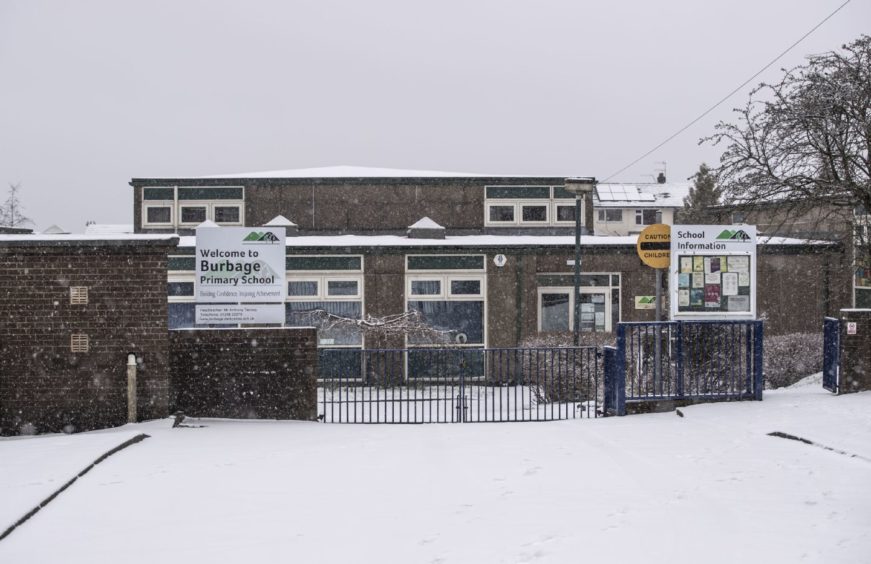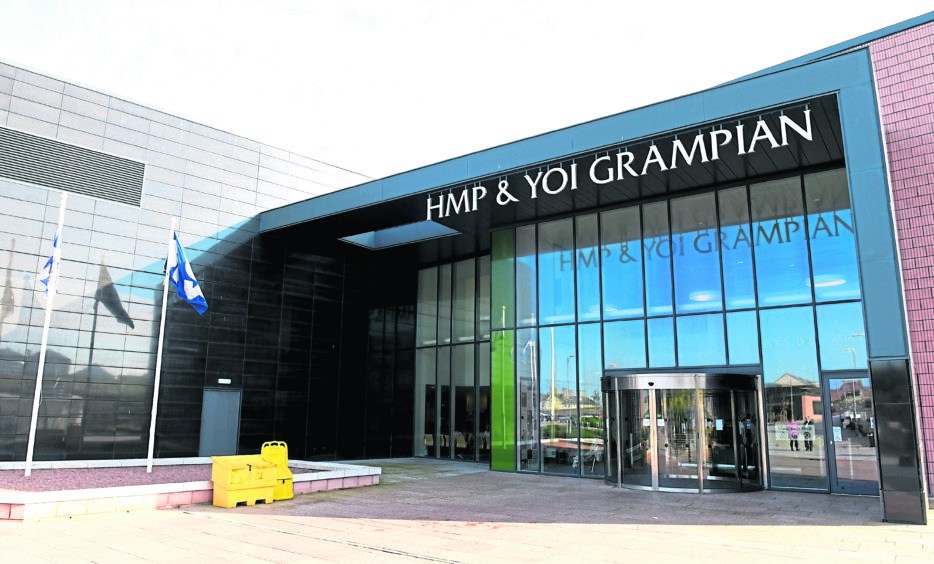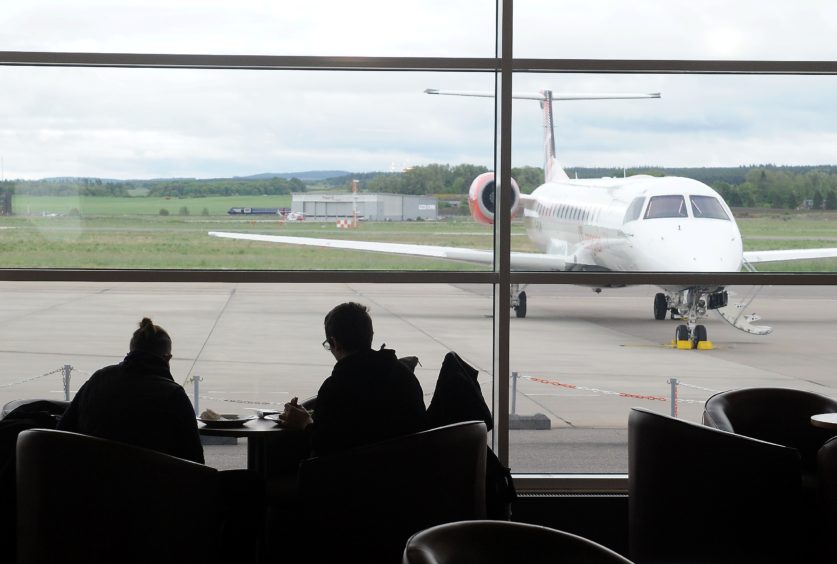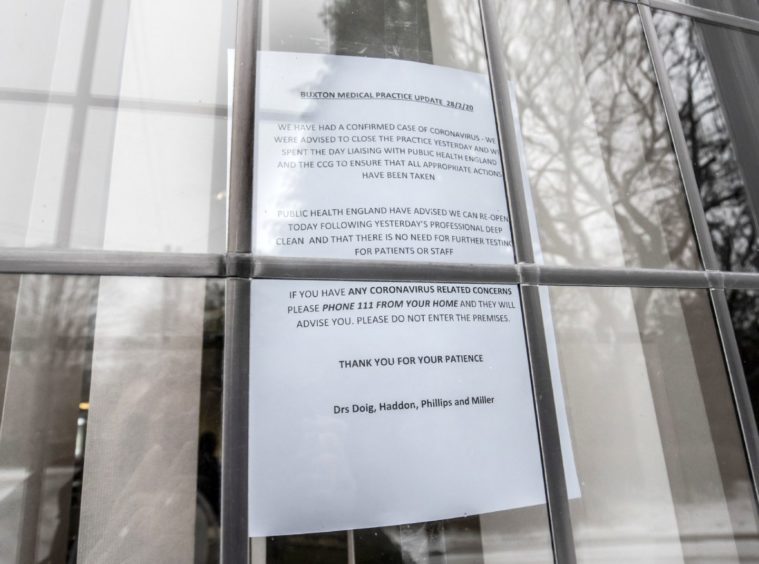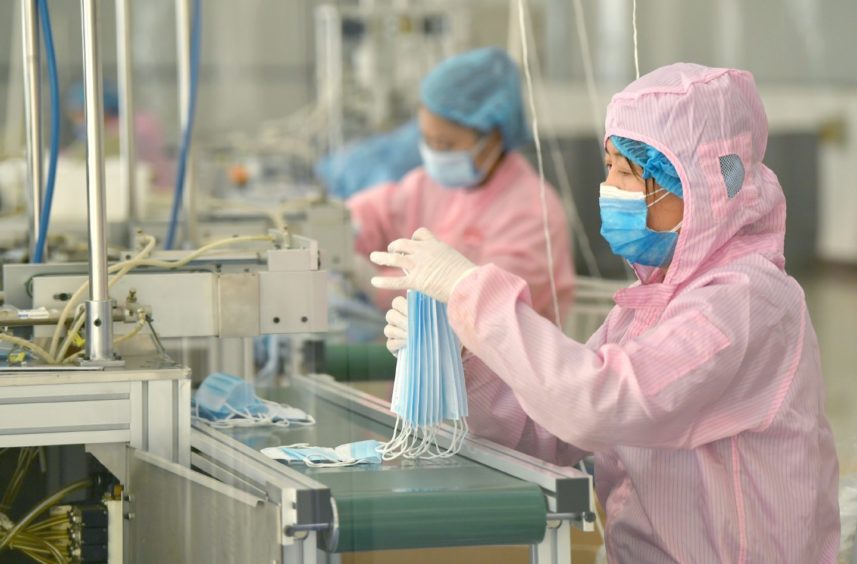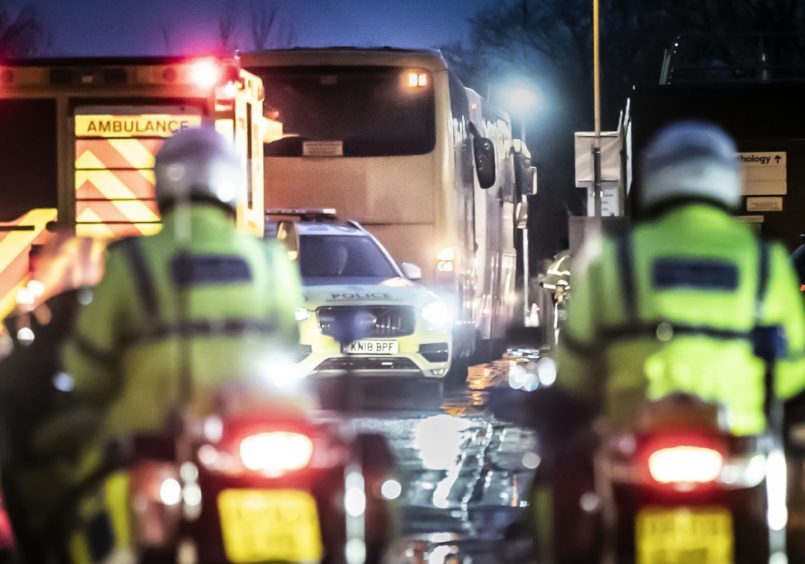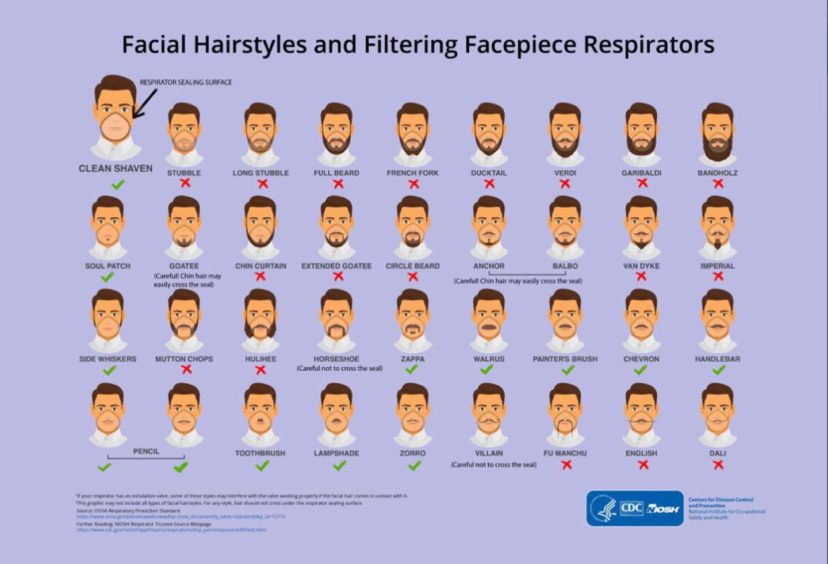Public services could be “rapidly overwhelmed” if a “potentially devastating” disease pandemic takes hold in Scotland, according to contingency plans put in place by the authorities.
Health chiefs insist they do not expect the coronavirus outbreak to cause such issues, of course, and experts have appealed for calm this week, saying lessons have been learned from previous outbreaks, including the relatively recent “swine flu” pandemic in 2009.
However, authorities across the world concede the true threat of coronavirus, and the COVID-19 disease it causes, remains unknown at this stage. The World Health Organization (WHO) on Friday upgraded its global pandemic warning to “very high” while maintaining that it does not yet constitute a pandemic.
“This is a reality check for every government,” said Mike Ryan, who runs the WHO’s emergencies program. “The window of opportunity is closing. Wake up.”
In such unsettling times, it can be reassuring to know that detailed planning documents exist, setting out “well-rehearsed procedures” that will hopefully ensure society can cope if the “worst case scenarios” ever materialise.
Follow the latest coronavirus news
Every public agency in Scotland has contingency plans in place for various unforeseen issues.
As an example, we looked at a 72-page document NHS Highland prepared in 2017 to prepare for the next flu pandemic, to discover what procedures were in place.
While flu is different from coronavirus, including in the sense that much less is known about the new virus and there are vaccines for flu, there are also similarities.
In a prescient warning, the NHS Highland document said: “A new strain of virus could emerge in any country (including the UK) but is most likely to first present in China or the Far East where the close proximity of humans, poultry and pigs in farming communities facilitates mingling of human and animal viruses with possible exchange of genetic material.
“Unprecedented growth in international travel, deterioration in the public health infrastructure in many countries and widespread emergence of drug-resistant bacteria all contribute to the possibility of the next pandemic being severe.”
The NHS Highland blueprint said it reflected the latest international guidance from the World Health Organization (WHO) at the time, and national guidance from the UK Health Departments.
It also emphasised that other contingency plans would come into effect during a major pandemic, covering emergency services, transport, food distribution, pharmaceutical supplies, utilities and communications, management of mass casualties, maintenance of public order and the role of the police and armed forces.
NEW: I understand the Cabinet Office has been in communication with local authorities about “Excess Death Contingency Planning”- effectively their “mass death preparedness” plans in the event of coronavirus being at upper end of worst case scenario.
— Lewis Goodall (@lewis_goodall) February 26, 2020
Tomorrow's front page: Virus panic #tomorrowspaperstoday https://t.co/0PfXIb0lpA pic.twitter.com/Krcbb3rZht
— Daily Mirror (@DailyMirror) February 27, 2020
The front page of tomorrow’s Daily Telegraph: ‘Major events in doubt as coronavirus fears grow’ #tomorrowspaperstoday pic.twitter.com/Nb6xLUmZyV
— The Telegraph (@Telegraph) February 27, 2020
Under the NHS Highland flu pandemic plan, health services would be braced to provide advice and treatment for up to 30% of all symptomatic people, and that between 1% and 4% of those who are symptomatic could require hospital care, and up to 25% of these may require critical care.
In such a widespread and severe pandemic, the health board would be attempting to deal with this while between 15% and 20% of its staff were absent.
The plan stated: “Influenza pandemics are rare events but when they occur they usually result in major morbidity and mortality, huge demands on health services and a wide range of impacts beyond the healthcare system on daily activities, business and the economy.
“Health services and other services could be rapidly overwhelmed.
“The potentially devastating effects of a pandemic, together with characteristic unpredictability in timing, severity and target populations, underline the importance of appropriate alertness and preparedness, both nationally and internationally.”
Health and social services
The impact of an influenza-type pandemic on health and social services would be “intense, sustained and nation-wide”, according to the report.
Significant factors would be:
• increased workload due to large numbers of patients with influenza and complications
• additional need for high dependency care, infection control facilities and equipment
• increased demand for social and community care services
• additional burden caused by anxiety and bereavement
• depletion of workforce and of numbers of informal carers because of the effects of influenza on them or their families
• pressure on all emergency services
• logistical problems due to interruption of supplies and utilities through absenteeism
• delays in dealing with other medical conditions and probable cancellation of elective admissions
• pressure on mortuary facilities (possibly with associated delays in death registrations and funerals.)
• longer term macro effects on national and world economy and the structure of society
Schools and other closed communities
The contingency plan noted that influenza transmits readily whenever people are in close contact and is likely to spread particularly rapidly in schools.
It highlighted that in 1957, up to 50% of school children developed influenza.
However, even those schools which were most severely disrupted had returned to normal four weeks after the appearance of the first case.
In residential schools, attack rates reached 90%, often affecting the whole school within a fortnight.
“So closing schools to pupils might reduce peak impact and clinical cases by 10%,” the contingency plan said.
“However, closing schools has a significant impact on business continuity and maintenance of essential services, particularly health care, due to parent workers needing to stay at home for childcare.
“The same would apply to early years/childcare settings where groups of children mix.
“It is unlikely therefore that widespread school closures will be required except in a very high impact pandemic.”
Prisons and military bases
Closed communities such as prisons were described as a “high-risk environment for transmission” of influenza, in the NHS Highland plan.
Prisoners were said to be more likely than many other sub-groups of the general population to have other issues which cause increased risk of severe or complicated influenza, such as asthma, respiratory disease secondary to smoking, and immunosuppression due to HIV/AIDS.
Measures such as isolation and cohorting of those affected, as well as treatment with antiviral medicine, and use of vaccine when available, would be required.
The plan noted that during the H1N1 influenza pandemic in 2009, these measures “proved highly effective in preventing widespread illness, and in bringing outbreaks under control”.
Military bases are “another potential site of rapid spread of illness”, and “close liaison with military personnel, medical staff and public health staff will be required”.
Impact on travel
There would be no plans to close national borders in the event of an influenza pandemic, according to the 2017 report.
Modelling suggests that such a measure would have no significant impact on the spread of the virus whereas the social and economic impact, such as disruption to supply chains, would be substantial.
There is also very little evidence that restrictions on mass gatherings or on internal travel arrangements will have any significant effect.”
The public may be advised to minimise non-essential travel but should continue travelling for essential journeys.
Travel may still be impacted, however, if there were any explicit restrictions on travel and public gatherings as a policy option, or by people opting not to travel, or due to the availability of fuel and transport workers.
“There is also very little evidence that restrictions on mass gatherings or on internal travel arrangements will have any significant effect on influenza virus transmission,” the plan said.
“The emphasis will instead be on encouraging all those who have symptoms to follow the advice to stay at home and avoid spreading their illness.”
Strategy
The approach to responding to a future pandemic was outlined in the UK Influenza Pandemic Preparedness Strategy 2011.
It takes the form of a number of phases named – Detection, Assessment, Treatment, Escalation and Recovery.
The UK has defined the “Detection and Assessment” phase as when human-to-human transmission of a novel influenza virus with pandemic potential, which poses a substantial risk to human health, is detected in the UK.
During this phase, the local NHS board pandemic influenza coordinating committee will be implemented after being convened to co-ordinate the NHS response, although it will probably have met earlier to consider the level of local preparedness.
Key decisions to be taken early by the committee will relate to:
- care of patients in their own homes and in the community
- personal protective equipment for staff and others
- availability, allocation, distribution and administration of antivirals (and vaccine if available)
- hospital and ITU admission policy
- confirming essential and non-essential NHS services
- reorganisation/cancellation of routine activity
- exploring alternative models of care
- maintaining supplies of equipment and pharmaceuticals
- staffing levels and contingency arrangements
- liaison with social services
- mortuary arrangements
- communication with staff, public and media particularly about local spread and service provision & treatment
- production of daily situation reports
According to the NHS Highland document, the committee would also be asked to confirm those services which are deemed to be essential, those that are non-essential during a pandemic, as well as the factors which will trigger cessation of non-essential activity.
For a health board, essential activity would be likely to include:
- urgent primary care medical services
- emergency medical services
- emergency surgical services
- maternity services
- cancer services
- renal services
- statutory mental health services
- emergency diagnostic services (to support all the above)
- payroll
Non-essential services were likely to include:
- elective surgery for non life threatening conditions
- elective medical admissions for assessment of non life threatening conditions 21
- chronic disease management and well women/men clinics
- routine check up laboratory tests
- all routine committee meetings
- childhood immunisations
As the pandemic develops, new ways of working might be required in the health service, and alternative models of care, including:
- utilising primary care emergency care centres for 24 hours a day
- triage of patients before seen by a doctor
- cohorting of infected patients into the same area, ward or floor
- giving repeat prescriptions without review
- restricting patient visiting
Staff may be asked to redeploy from their normal duties or to alter their working patterns. Changes might include redeploying:
- staff from outpatient to inpatient depts/areas
- community staff to acute care settings or vice versa
- junior medical staff in surgical specialities when elective procedures are postponed
- doctors and nurses from the school health, community paediatric service
- family planning staff
- community health nurses
- admin and clerical and other support staff
Or other more general changes like:
- cancelling all study leave
- using retired staff or volunteers as appropriate
As well as the local NHS board pandemic influenza coordinating committee, an initial meeting of the Regional Resilience Partnerships (RRP) would also be called, according to the report.
Local partnerships would likely be chaired by the NHS in the early stages, the police once it evolves and has “greater consequence management issues for society”, and then a local authority chief executive in the latter phases.
Possible interventions
• According to the influenza pandemic contingency plan, an appropriate vaccine, if available, would offer the greatest reduction in cases, complications and deaths and in disruption to health and other services.
However, a lead time of several months is inevitable between identification of a pandemic virus and mass production of vaccine, the report said.
In the case of the new coronavirus, current forecasts suggest a tested and mass-produced vaccine would be 12-18 months away at the earliest.
In the case of flu, even when vaccine and circulating virus strains are well matched, vaccination reduces infection by only around 70%, hospital admissions of high-risk individuals by approximately 60%, and deaths by 40% or so.
Scottish Government: ‘We are planning for every eventuality’
A Scottish Government spokesperson said: “As part of our planning for any significant health outbreak, like Covid-19, it is proper that authorities prepare for every possibility including the reasonable worst case scenario. This is not a prediction that this will happen, but a part of the range of contingency planning that any responsible Government would carry out.
“We have been clear from the outset that we expect coronavirus to have some impact in Scotland, which is why we are planning for every eventuality.
“Public safety is our top priority and while there are currently no confirmed cases in Scotland, we have a team of public health experts and scientists working round the clock to make sure our NHS widely is fully prepared.
“We are well-prepared for an outbreak in Scotland, but the public also has a vital role to play in helping us contain any positive cases by keeping themselves informed, and following basic hygiene precautions such as hand-washing and covering their nose and mouth with a tissue when coughing or sneezing.”
NHS Highland: ‘Scotland’s NHS is well equipped to deal with infections of this kind’
A spokesman for NHS Highland said: “We have well-rehearsed procedures in place to deal with coronavirus, having developed steps to deal with any such communicable virus.
“Scotland’s NHS is well equipped to deal with infections of this kind.
“We have a proven track record of dealing with challenging health issues, and have been preparing for this possibility since the beginning of the outbreak in Wuhan.”
